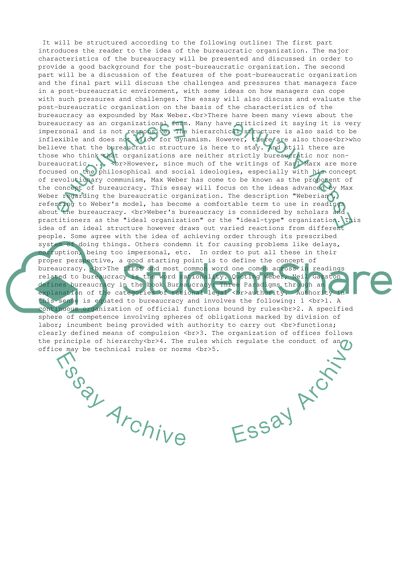Cite this document
(“The Post Bureaucratic Organization Essay Example | Topics and Well Written Essays - 3500 words”, n.d.)
The Post Bureaucratic Organization Essay Example | Topics and Well Written Essays - 3500 words. Retrieved from https://studentshare.org/business/1533537-the-post-bureaucratic-organization
The Post Bureaucratic Organization Essay Example | Topics and Well Written Essays - 3500 words. Retrieved from https://studentshare.org/business/1533537-the-post-bureaucratic-organization
(The Post Bureaucratic Organization Essay Example | Topics and Well Written Essays - 3500 Words)
The Post Bureaucratic Organization Essay Example | Topics and Well Written Essays - 3500 Words. https://studentshare.org/business/1533537-the-post-bureaucratic-organization.
The Post Bureaucratic Organization Essay Example | Topics and Well Written Essays - 3500 Words. https://studentshare.org/business/1533537-the-post-bureaucratic-organization.
“The Post Bureaucratic Organization Essay Example | Topics and Well Written Essays - 3500 Words”, n.d. https://studentshare.org/business/1533537-the-post-bureaucratic-organization.


